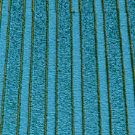Article contents
Electrodeposition of nanowires for the detection of hydrogen gas
Published online by Cambridge University Press: 31 January 2011
Abstract

Nanowires composed of noble metals are attractive candidates for chemical sensors because they are both ductile and chemically stable in air. The single application where electrodeposited metal nanowires have had the largest impact is that of hydrogen gas (H2) sensing. The development of sensitive, selective, power-efficient, rapid-responding, and inexpensive H2 sensors, for the purpose of detecting leaked H2 in proximity to devices such as fuel cells, is an active area of research. In this application, a change in the dc electrical resistance of the nanowire from its background value signals the presence of H2 and provides an estimate of its concentration. Two types of nanowires have been studied for use as hydrogen sensors: Electrodeposited nanowires composed of pure palladium metal (Pd) reversibly absorb hydrogen to form a hydride according to Pd + xH2 → PdH2x. Alternatively, nanowires that transduce the presence of H2 may be prepared by decorating an inert, electrically conductive support such as a carbon nanotube or a nickel nanowire with one or more eletrodeposited palladium nanoparticles. These palladium nanoparticles impart selectivity to H2 and cause the electrical conductivity of the composite particle/support to be modulated in the presence of H2. Here we summarize recent contributions of electrodeposition to the development of nanowire-based sensors for H2.
- Type
- Technical Feature
- Information
- MRS Bulletin , Volume 35 , Issue 10: Electrodeposition and Chemical Bath Deposition of Functional Nanomaterials , October 2010 , pp. 771 - 777
- Copyright
- Copyright © Materials Research Society 2010
References
- 12
- Cited by


